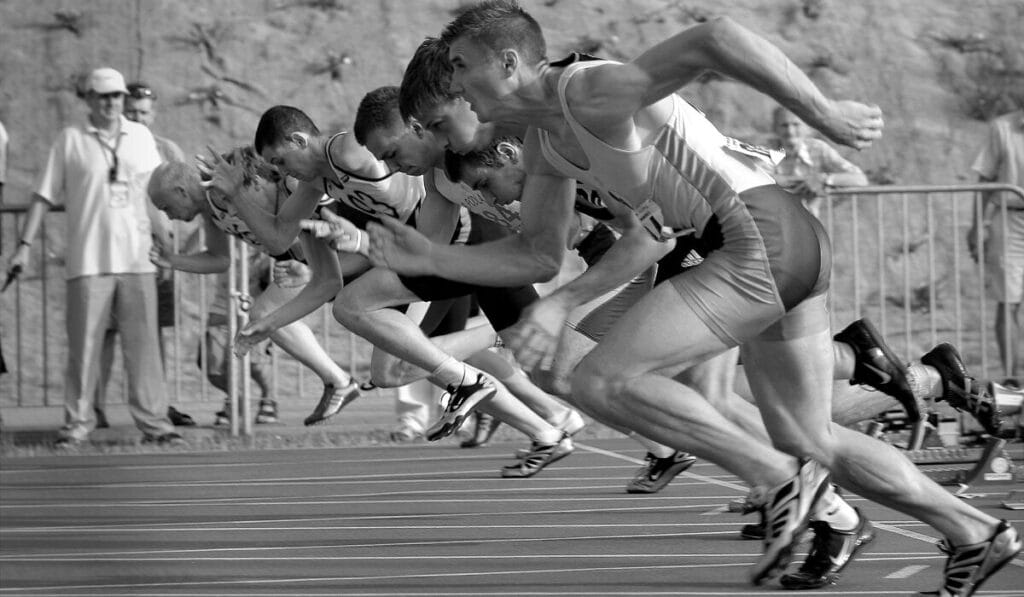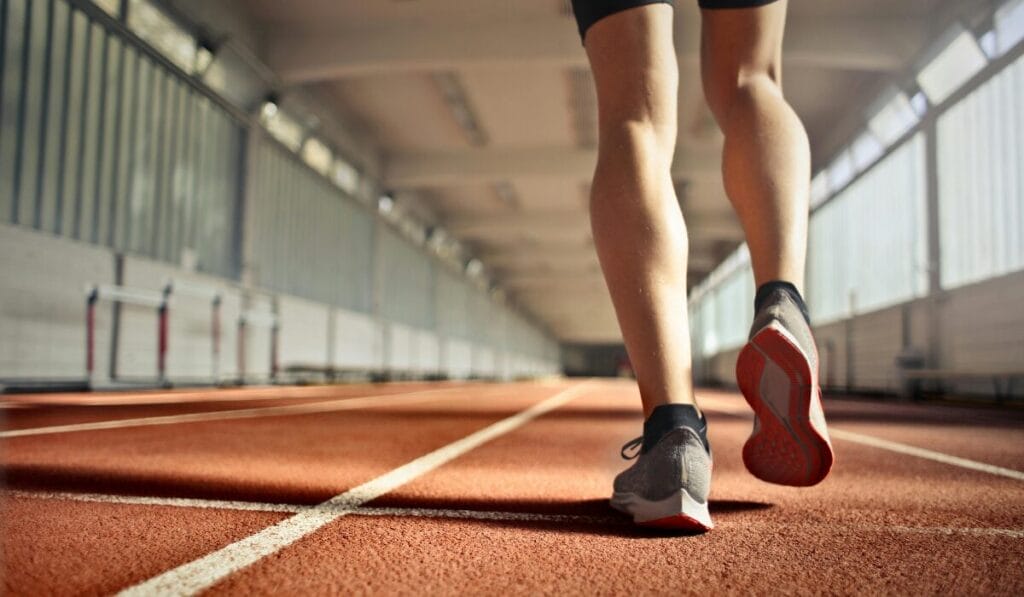How many Running shoes do you need?
For most people, 1 or 2 pairs are enough, but if you plan to run regularly, it’s best to have 2 or 3 pairs so you can alternate between them. Running shoes are essential to a runner’s gear, which is why some runners get by with one pair, while others rotate between multiple pairs for a variety of reasons, including improved performance, better comfort, and longevity. If you’re wondering how many running shoes you should own, this guide will help you make an informed decision.
Also, if walking is part of your routine too, check out our ultimate guide to the best walking shoes to make the right footwear choices.”

How Many Running Shoes Do You Need? Understanding the Basics
Running shoes depend on various factors such as the frequency of running, terrain conditions, and your preference. Usually, runners use more than one pair, but if you are a quiet runner, even one pair may be enough. Here are some common reasons that show that having more than one pair is useful for a runner:
- Long life / Durability: Using a single pair for running wears them out quickly while having more pairs increases their lifespan.
- Avoid accidents: Rotating shoes alters the foot’s impact, reducing the risk of accidents and injuries.
- Different Running Conditions: Each field of running has different shoes, such as trail, road, and treadmill, each with its specific running shoes, which are necessary.
- Performance Enhancement: Similarly, the performance of running shoes can be improved by using some special shoes for long runs, speed training, and races.
Factors to consider when deciding the number of pairs
1. Running Frequency and Training Volume
If you are used to running occasionally, then, of course, one pair is enough for you. However, if you run a lot in a week, which is good for your health, one pair does not work. At least two pairs should be kept. Read the below to understand how many running shoes you need.
2. Type of Running Surfaces
As mentioned earlier, different regions require different running rates. Here are some important points worth reading:
- Road Running: Specially cushioned shoes for asphalt and pavement.
- Trail Running: Rugged soles for grip stability and durability.
- Treadmill Running: Light and breathable shoes that are made for this purpose.
3. Training Variety
Multiple pairs become necessary for runners engaged in different types of training:
- Daily Training Shoes: A gift for regular runners because it is durable and comfortable.
- Speed Training Shoes: The exercises that are done at intervals are designed and are very light.
- Race Day Shoes: This is a high-quality shoe for competition enthusiasts.
- Recovery Shoes: Musculoskeletal sufferers beware, it shows with extra cushioning.
4. Weather Conditions
Changing weather may require changing shoes:
- Summer Running: Keeping the feet cool in the heat and making it breathable and lightweight. footwear is the specialty of this season.
- Winter Running: These shoes are used to protect the water and keep the feet normal.
- Rainy Conditions: Water-resistant shoes are the best thing to prevent discomfort.

How Many Running Shoes Do Professional Runners Use?
Professional runners and elites have not one but several pairs of running shoes, while the average person who just runs for running can own:
- 2-3 Pairs of Daily Training Shoes normally.
- 1-2 Pairs of Speed Training Shoes for everyone
- 1 Pair of Racing Shoes if you are interested
- 1 Pair of Trail Running Shoes if you want
- 1 Pair for Recovery Runs for example
Recreational runners may benefit from not too many, but at least a few pairs.
Benefits of Rotating Running Shoes
Rotating your running has many benefits beyond durability, including:
- Reduced Risk of Injury: Since different shoes provide different support, the joints and muscles are the same, so the pressure on them is reduced.
- Better Adaptation to Training: Changing your shoes allows your feet to get used to different conditions, which makes them stronger and helps with stability.
- Moisture Management: Wearing the same pair of shoes every day can cause your feet to sweat, which can lead to odor and bacteria. Using different pairs gives the remaining pairs time to dry out.
- Improved Performance on Race Day: By using running shoes, you will later realize that you have used them before when you run in race shoes.
Signs You Need a New Pair of Running Shoes
Don’t assume that all shoes will not deteriorate over time, but they will. Here are some signs that indicate when to replace your shoes:
- Flattened Cushioning: When the cushioning weakens, such as when the bounce decreases, it’s time to replace your shoes..
- Worn-Out Soles: When your shoes lose their grip, especially in wet conditions, it’s time to replace your shoes.
- Pain or Discomfort: If you experience new pain in your knees, ankles, or hips, it’s time to replace your shoes.
- Visible Damage: Tears, cracks, and compressed midsoles are signs that your shoes need replacing.
Budget-Friendly Tips for Building a Shoe Rotation
If you want to own more pairs, you don’t have to rob and break the bank, but you can own multiple pairs on a low budget:
- Buy During Seasonal Sales: Shop at the end of the season, as the summer season is about to begin, and then you can easily buy winter shoes with 30 to 50 percent off.
- Look for Previous Year Models: Often buy old models, they are not less in quality to modern models, although they are cheaper.
- Use Cashback and Reward Programs: Many online stores give rewards and also give cashback; take advantage of these facilities.
- Alternate Between High-End and Budget-Friendly Pairs: Buy shoes between a very high and medium budget, and you will get some benefit in the long run.
What Experts Say
1. Runner’s World
According to a report by Runner’s World, runners who use two or more pairs of shoes have a 39 percent lower risk of injury.
Source: Runner’s World
2. Run To The Finish
At least two pairs are necessary for most runners, although this is a trickster question; if you run 4 days a week, buy at least two pairs.
Source: runtothefinish.com
Real Users review
My personal Experience (Haroon Khan)
I myself am using zero-drop shoes for running. I only have one pair, and I run every morning, which has resulted in my shoes being almost ruined, and yesterday, Thursday, 11.09.2025, my shoelaces also broke. That is why experts and users say that at least two pairs are necessary, although 3 or 4 should be kept. This is my direct running experience, not a copied opinion
Source: Haroon Khan
User Review from Reddit
Shoes need rest. Running in the same pair will wear them out quickly. It is not necessary to buy different types of shoes, but rather use several pairs of the same shoes.
Source: reddit.com
Conclusion
The number of running shoes you should have depends on your needs, habits, goals, and personal preferences. If you are an avid runner, one pair is sufficient, and if you run regularly, at least two pairs are essential. It also increases, and it is also related to the weather. If different running shoes are used for all seasons, hot, cold, rainy, humid, it is a sign of professional people.

FAQs
Q1. How many pairs of running shoes should you have?
Most experts recommend keeping two pairs, however, if you use your shoes a lot, keep 3-4 pairs. This will give you the opportunity to rotate your shoes, extend their lifespan, and reduce the risk of injury.
Q2. How many pairs of shoes do I need to train for a marathon?
Having two pairs of shoes is almost essential for marathon training, which provides consistent support, prevents the constant use of one pair, and allows for comfort during long training sessions.
Q3. Are the same running shoes enough for all types of running?
The answer is yes, but not better. It is better to use different running shoes for different areas and terrain.
Q4. When should running shoes be changed?
It is generally said that running shoes should be changed every 300 to 500 miles
Q5. Do you need separate shoes for racing or are running shoes enough?
Originally, racing shoes were designed for lightness and speed, but if one uses running shoes for racing, it can be.

